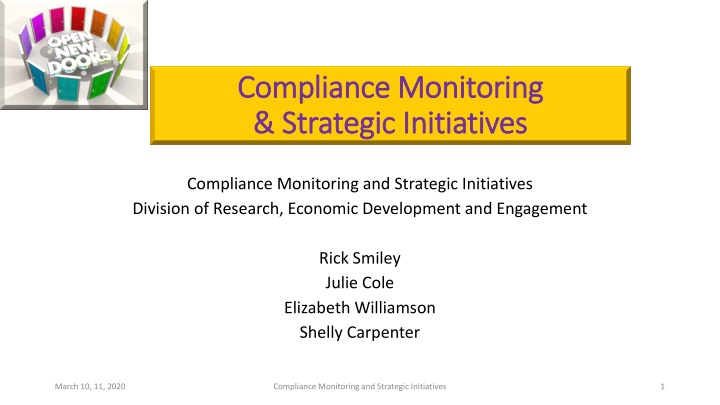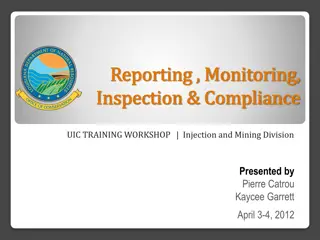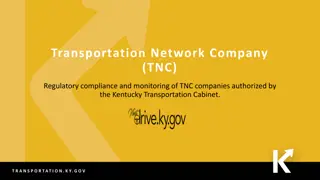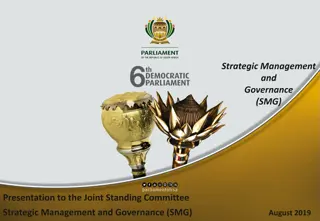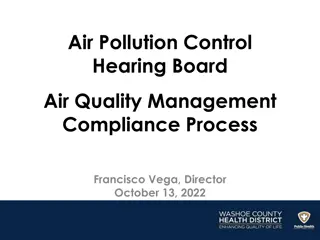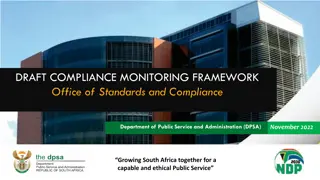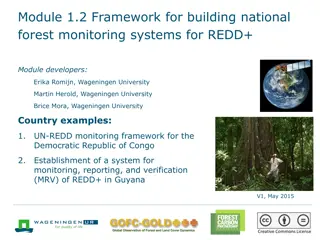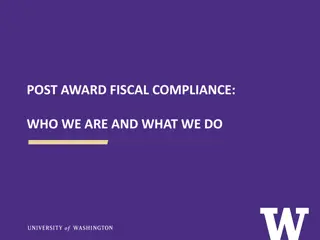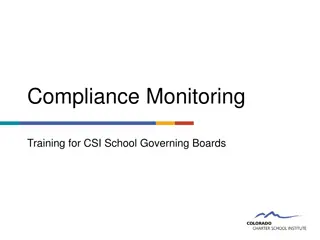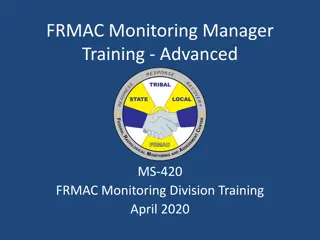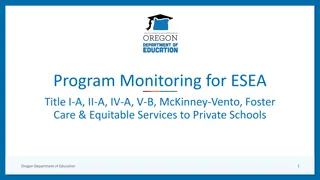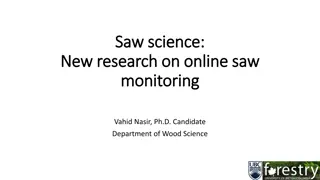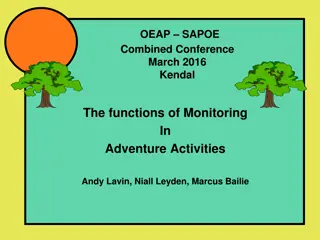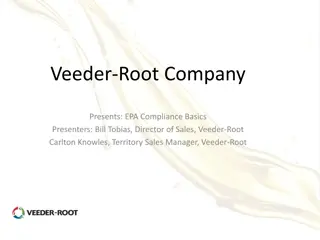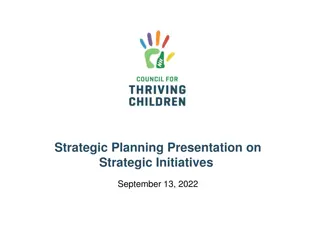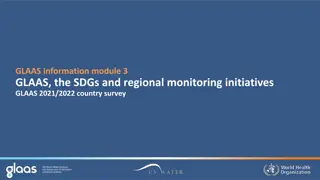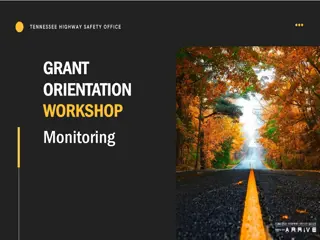Compliance Monitoring and Strategic Initiatives Division
This content discusses Compliance Monitoring and Strategic Initiatives within the Division of Research, Economic Development, and Engagement. It includes information on key project financial data, project status reports, research-related policies and procedures, as well as specific policies on award management and allowable costs.
Download Presentation

Please find below an Image/Link to download the presentation.
The content on the website is provided AS IS for your information and personal use only. It may not be sold, licensed, or shared on other websites without obtaining consent from the author.If you encounter any issues during the download, it is possible that the publisher has removed the file from their server.
You are allowed to download the files provided on this website for personal or commercial use, subject to the condition that they are used lawfully. All files are the property of their respective owners.
The content on the website is provided AS IS for your information and personal use only. It may not be sold, licensed, or shared on other websites without obtaining consent from the author.
E N D
Presentation Transcript
Compliance Monitoring Compliance Monitoring & Strategic Initiatives & Strategic Initiatives Compliance Monitoring and Strategic Initiatives Division of Research, Economic Development and Engagement Rick Smiley Julie Cole Elizabeth Williamson Shelly Carpenter March 10, 11, 2020 Compliance Monitoring and Strategic Initiatives 1
PI Portal (& Administrative Dashboard) PI Portal (& Administrative Dashboard) The PI Portal provides key project financial information using intuitive graphs and figures. PI Portal Shows expenditure data accessible to investigators F&A Balances Shows detail of investigator F&A Administrative Dashboard Shows expenditure data accessible to unit administrators Management Reports Lists projects matching specific monitoring criteria. This site works best with Chrome, IE (not Edge), or Safari. If off campus or on WIFI please connect to the ECU VPN first.
Purpose and Use Purpose and Use These reports depict the current status of the project in a more intuitive format than Banner Intended to be more useful for non-financial professionals Access for PI s and Hubs already in place. Other users desiring access should work with the Associate Dean for Research.
Research Related Policies & Research Related Policies & Procedures Procedures General Administrative Principles (GAP) Standards of Practice (SOP) Resources Guidance Alerts 100 Overview of Research Administration 200 General Operating Standards 300 Proposal Development and Submission 400 Award Acceptance and Establishment 500 Award Management 600 Reporting 700 Project Closeout 800 Audits 900 Miscellaneous
REDE Policies and Procedures REDE Policies and Procedures 500 Award Management 510 Allowable Cost: Cost Principles (PDF) Allowable Cost Exception Request Form (PDF) 511 Cost Transfer Policy (PDF) 512 Equipment Purchase Policy (PDF) 513 Unallowable/Disallowed Cost Policy (PDF) 512.01 Unallowable/Disallowed Cost SOP (PDF) 520 Cost Share Guidance 520.01 Cost Share Reconciliation Form (XLS) 520.02 Cost Share Flow Chart (PDF) 521 Third Party Cost Share Guidance 521.01 Sample Third Party Commitment Letter 521.02 Sample Third Party Cost Share FollowUp Agreement 521.03 Sample Unit Cost Share Responsibility Memo rede.ecu.edu/oraintra
GAPs GAPs General Administrative Principles (GAP) GAPs are top-level (relative to Research Administration) documentation of broad core principles of specific research administration and compliance issues. Examples: Allowable Costs, Cost Transfers GAPs generally make reference to laws, regulation, and requirements external to REDE and represent REDE s understanding of and intent to comply with those laws, regulations, and requirements GAPs generally do NOT document specific processes, practices, or procedures, although high level general procedures will be incorporated as much as possible there will be additional clarification provided in subordinate documents (Resources, Guidance, or Standards of Practice) Reviewed annually: but with very limited expectation of revision
SOPs SOPs Standards of Practice (SOP) Standards of Practice outline processes or procedures by which the General Administrative Principles are made operational. Example: Processing Cost Transfers, Review Process for Identifying/Correcting Unallowable Costs SOP s are specific to a particular GAP, reference that GAP, and may be referenced by that GAP SOPs are specific, functional, and instructive useable for orientation, training, and quality assurance purposes Reviewed quarterly: informed by CMSI Monitoring Reports to identify issues to be addressed with updated guidance
Resources Resources Resources Resources are checklists, spreadsheets, web pages, forms, or similar tools which are either necessary or helpful to the implementation of a GAP or SOP. Resources are highly specific and functional intended for real-time operational use Reviewed quarterly: updated frequently as new technology solutions, system changes, etc. are implemented
Guidance Guidance Guidance Guidance is additional discussion of issues implicit within a GAP but perhaps not readily inferred. Example: Clarification of allowability of charging clerical and administrative staff on sponsored programs Guidance is highly specific providing additional information, interpretation, or clarification which improves understanding of the GAP. Guidance is NOT a revision to the GAP or the introduction of a new variance or waiver scenario (such a change should be accomplished via a revision to the GAP). Guidance documents are linked to respective GAPs for further clarification. Reviewed quarterly: the need for new guidance documents is informed by Monitoring and Management report data, training feedback, and/or questions from ASDRs/Hubs and Faculty for clarification of certain issues. Example: Charging tuition for Master level students to sponsored programs
Alerts Alerts Alerts Alerts are email communications relative to a specific topic used to communicate an immediate need for review and action. Example: Faculty now required to use ORCHID for developing a required federal proposal form Alert topics may be incorporated into exiting SOPs and GAPs, depending on the level of each requirement Alert topics will be provided to the regular Hub meetings and throughout ORA to ensure rapid adoption Alert topics may also be developed into checklists, online training modules, etc. Review schedule is not applicable, as the Alert Topics will fold into the items listed above
Alerts Alerts
Management Reports Management Reports - - 2020 2020 Regular/monthly reports designed to provide predictive opportunity for proactive sponsored program management Designed to address high risk charges and activities Disseminated to ORA Post Award and Hubs Most with drill down capacity March 10, 11, 2020 Compliance Monitoring and Strategic Initiatives 12
Management Reports Management Reports - - 2020 2020 CMSI Management Reports Early Warning reports designed to provide opportunity for triage and proactive engagement with PIs Customizable through sliders Available to ORA Post Award and Hubs March 10, 11, 2020 Compliance Monitoring and Strategic Initiatives 13
Management Reports Management Reports - - TBD TBD Future State Monthly reconciliation support PI new award meetings Subrecipient process changes Cost Sharing March 10, 11, 2020 Compliance Monitoring and Strategic Initiatives 14
Portfolio Review Portfolio Review Sponsored Projects Sponsored Projects CMSI provides broad, as well as, targeted reviews of sponsored projects as a proactive initiative to identify and address opportunities for policy, process and practice improvement. March 10, 11, 2020 Compliance Monitoring and Strategic Initiatives 15
Portfolio Review Portfolio Review Overview Overview A portfolio review is an assessment of all projects in a particular college/school. This review is based on specific criteria and focus on key issues most commonly identified in audits. The goal is to offer predictive information on areas and/or practices that might become issues in compliance oversight. March 10, 11, 2020 Compliance Monitoring and Strategic Initiatives 16
Portfolio Review Portfolio Review Reasonable Assurance Reasonable Assurance The portfolio review is intended to provide reasonable assurance that awards are administered in accordance the proposal, application, award documents and applicable principles, terms and conditions, as defined by both ECU and the awarding agency entities. March 10, 11, 2020 Compliance Monitoring and Strategic Initiatives 17
Portfolio Review Portfolio Review Key Issues Key Issues Key issues most commonly identified in audits include: Subrecipient Management/Monitoring Cost Share Allowable Costs Atypical Costs Effort Reporting and Close March 10, 11, 2020 Compliance Monitoring and Strategic Initiatives 18
Reasonable Assurance Reasonable Assurance Key Issues Key Issues Subrecipient activities are monitored; subrecipient audit findings are resolved, and the impact of any subrecipient non-compliance is evaluated. Provide reasonable assurance that subrecipients obtain required audits and takes appropriate corrective action on audit findings. Matching, level of effort, or earmarking requirements are met using only allowable funds or costs which are properly calculated, valued and documented, including those for subrecipient and/or third parties. March 10, 11, 2020 Compliance Monitoring and Strategic Initiatives 19
Reasonable Assurance Reasonable Assurance Key Issues Key Issues Procurement of goods and services are made in compliance with provisions of the 2 CFR 200, as outlined in institutional cost principles including compliance with the real property acquisition, appraisal, negotiation, and relocation requirements. Reports submitted to awarding agency entities include all activity of the reporting period, are supported by underlying accounting or performance records, and are fairly presented in accordance with program requirements. March 10, 11, 2020 Compliance Monitoring and Strategic Initiatives 20
Methodology Methodology Engagement ORA personnel perspective and background College / school opportunity to meet parties involved, discuss process, and address Planning Develop a report of college / school project portfolio by complexity and risk factor metrics Determine scope of review, number of projects, processes, etc. March 10, 11, 2020 Compliance Monitoring and Strategic Initiatives 21
Methodology Methodology Field Work Examine processes and systems Examine selected projects Document findings and prepare report Reporting Review findings with college / school Document proposed resolutions March 10, 11, 2020 Compliance Monitoring and Strategic Initiatives 22
Methodology Methodology Closure Issue final report, resolutions, and recommendation to College / School, the Vice Chancellor for Research, Economic Development and Engagement, and Internal Audit 6 month follow-up with appropriate parties March 10, 11, 2020 Compliance Monitoring and Strategic Initiatives 23
Effort:Current Process VS Proposed Process Current Proposed 4 Reporting periods for East and West Campus 865 average number of reports each cycle Quarterly reporting periods Includes all employees paid from sponsored funds 5 reporting cycles separate for East and West campus Reduce number of reports each cycle Semester/FY reporting periods Includes only SM payroll from sponsored funds. Less 130 forms March 10, 11, 2020 Compliance Monitoring and Strategic Initiatives 24
Current Effort Dates 0515 March 1 May 15 0815 May 16 August 15 1130 August 16 November 30 0228 December 1 February 28 March 10, 11, 2020 Compliance Monitoring and Strategic Initiatives 25
Proposed Effort Dates 9/12 EAST CAMPUS E1 FALL E2 SPRING E3 SUMMER August 16 December 31 January 1 May 15 May 16 August 15 12/12 WEST CAMPUS W1 W2 July 1 December 31 January 1 June 30 March 10, 11, 2020 Compliance Monitoring and Strategic Initiatives 26
Proposed Effort Changes No forms created for students and temps (payroll will pull in for reporting purposes) Monthly personal reports sent out to hubs Monthly variance reports sent to hubs March 10, 11, 2020 Compliance Monitoring and Strategic Initiatives 27
